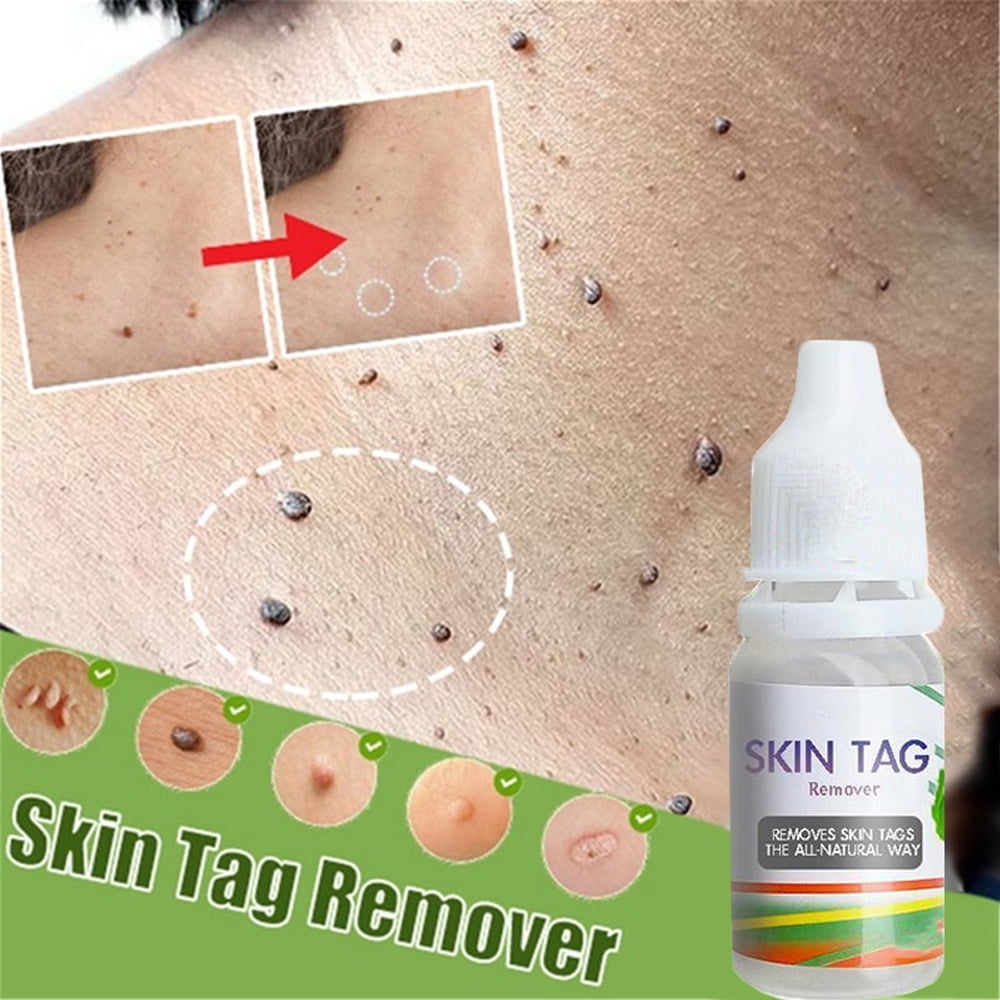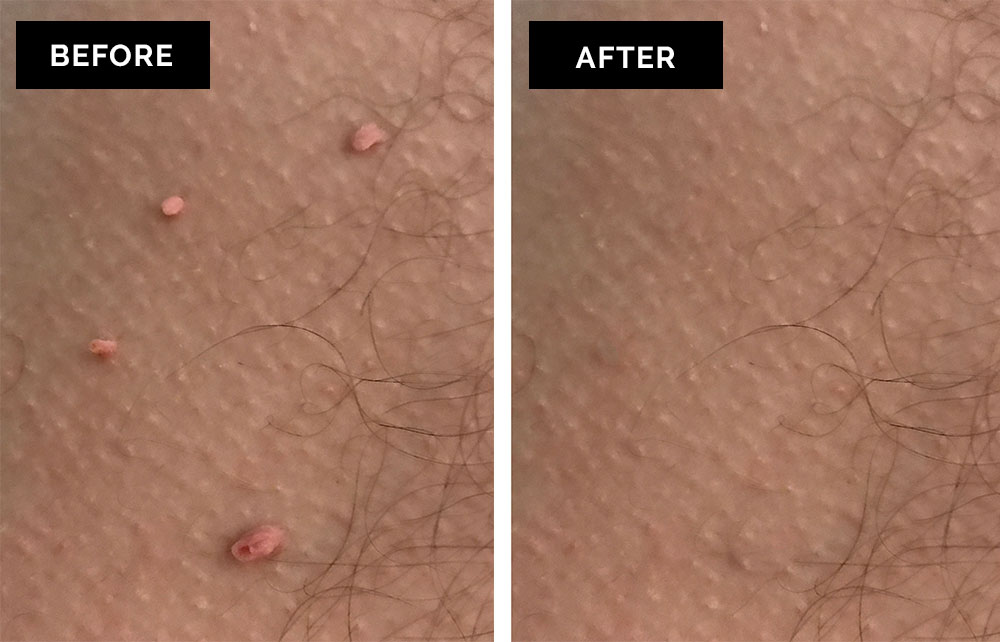

#Skin tag removal skin
Removing a skin tag at home is not normally recommended, due to a risk of bleeding and possible infection. Skin tags on the eyelid, especially those close to the eyelid margin, may have to be removed by an ophthalmologist, or specialist eye doctor. These procedures should only be done by a dermatologist, or specialist skin doctor, or a similarly trained medical professional. Excision: The tag is cut out with a scalpel.Ligation: The blood supply to the skin tag is interrupted.Cryosurgery: The skin tag is frozen off using a probe containing liquid nitrogen.Cauterization: The skin tag is burned off using electrolysis.Removing a large skin tag from the face or under the arms can make shaving easier. Large skin tags, especially in areas where they may rub against something, such as clothing, jewelry or skin, may be removed due to irritation. They can range in diameter from 2 millimeters (mm) to 1 centimeter (cm), and some may reach 5cm.Īs skin tags are usually harmless, removal is normally for aesthetic or cosmetic reasons. Skin tags start small, flattened like a pinhead bump. They are usually flesh-colored or slightly brownish. They are often raised from the surface of the skin on fleshy peduncles, or stalks.

The surface of skin tags may be smooth or irregular in appearance. Very large skin tags may burst under pressure. In some cases, they rub off or fall off painlessly. Some people may have skin tags and never notice them. They often go unnoticed, unless they are in a prominent place or are repeatedly rubbed or scratched, for example, by clothing, jewelry, or when shaving. They consist of a core of fibers and ducts, nerve cells, fat cells, and a covering or epidermis. Skin tags are benign, noncancerous, tumors of the skin. If you have skin tags that bother you or make you unhappy with the appearance of your skin, schedule a consultation online today or by calling the Integrated Dermatology of Newton-Brighton office nearest you.Share on Pinterest Skin tags are harmless and often removed for cosmetic reasons. Skin tag removal may leave a small scar, but your provider does everything possible to avoid scarring.

The dermatology experts focus on protecting your skin throughout your treatment and can treat multiple skin tags during the same appointment. If you have large skin tags, your provider might opt to remove them using a scalpel or scissors. Other options available for skin tag removal include: ElectrocauteryĮlectrocautery uses a heated needle to burn the skin tag and destroy the extra skin tissue. In this treatment, your provider applies liquid nitrogen to the tag to freeze and destroy the tissue. How are skin tags removed?Ī common method Integrated Dermatology of Newton-Brighton uses to remove bothersome skin tags is cryotherapy.
#Skin tag removal professional
The practice recommends professional skin tag removal over at-home remedies to prevent skin damage, bleeding, and infections. Integrated Dermatology of Newton-Brighton offers on-site skin tag removal services to safely eliminate the extra skin. However, if you have skin tags that catch on your clothing, they can be painful. When do I need treatment for skin tags?īecause skin tags are harmless, you don’t generally need treatment for them. People who are obese and those who have diabetes also tend to have skin tags. It’s also believed that hormones can play a role in the development of skin tags, as many women develop them during pregnancy. Some of the most common places skin tags develop are at folds in your skin, such as on your: The skin tag might stay the same size or continue to grow with more friction. When your clothing or jewelry rubs against your skin, a small, flesh-colored bump can develop. The most common cause of skin tags is friction. These growths are collagen fibers, fat, and small blood vessels that appear as a piece of skin hanging from a stalk. Skin tags are benign skin growths that develop on the surface of your skin.


 0 kommentar(er)
0 kommentar(er)
